Ever struggled with uneven paint on wood? Discover the magic of “Lacquer Primer For Wood” – your ultimate solution to a flawless, long-lasting finish! Curious? Read on!

Primer makes the surface ready to accept the paint or topcoat. It is useful to prepare the wood grain ready to hold onto a paint color.
I generally use an alcohol-based primer before applying any paint. But for the first time, I was curious to know how to apply lacquer primer on wood and how it behaves.

I did some research with the help of experts and found some useful information about lacquer primer and tested it out for some of my furniture.
Surprisingly it went so well.
So, let’s talk about using, Lacquer primer for wood.
Lacquer primer works great on wood as an undercoat making wood ready to accept the topcoat or paint. It ensures better adhesion of the paint to the surface which makes the paint job last longer. Plus, lacquer primer saves paint from absorbing into the porous surfaces by sealing the wood.
But there’s a lot more to get into about lacquer primer for wood.
So, in this article, I’ll explore all there is to know about applying lacquer primer for wood, and how to apply and use it with all the tips and techniques.
Furthermore, I’ll answer some frequently asked questions as well.
Let’s get started!
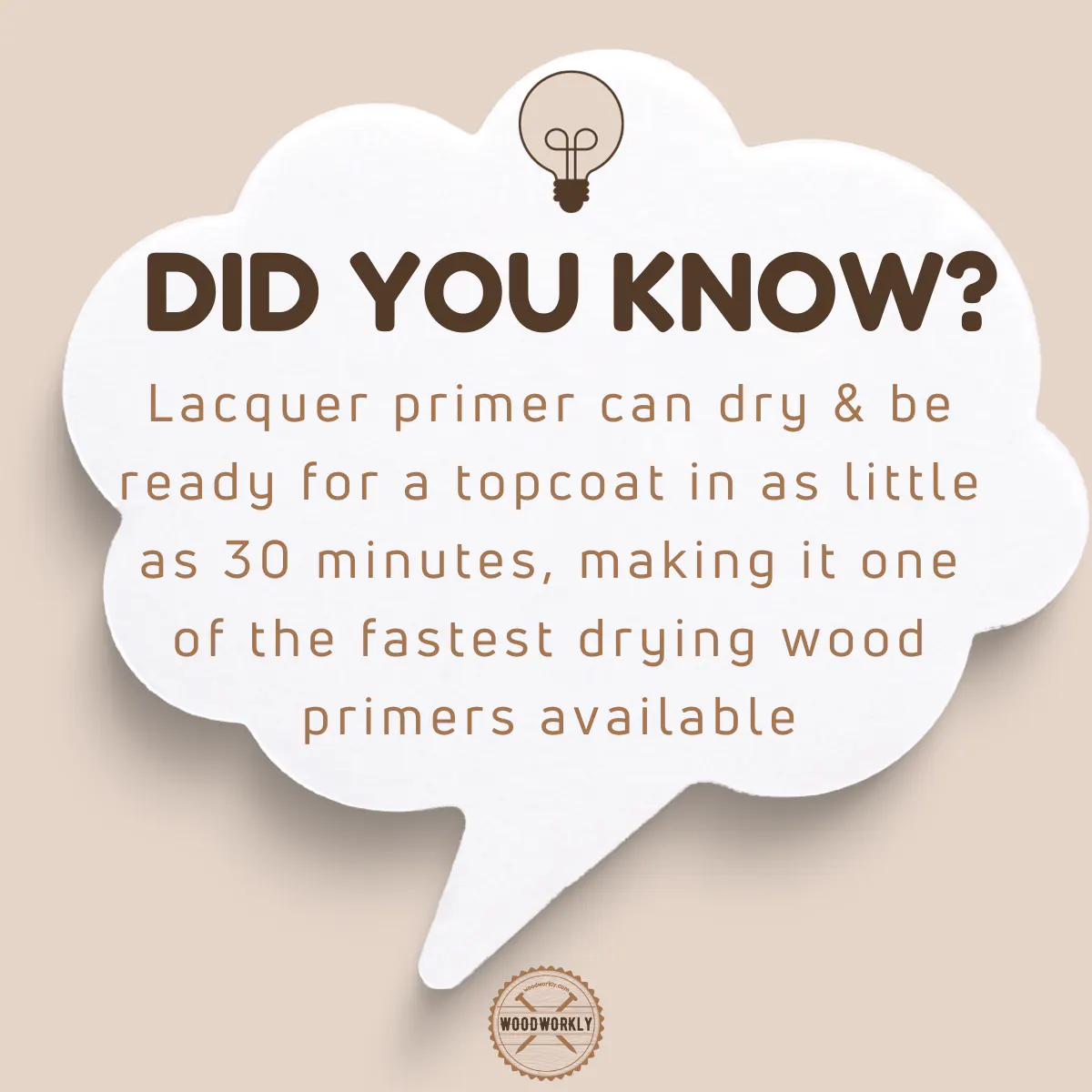
What Is A Lacquer Primer?
Lacquer primer is an undercoat that helps to treat wood surfaces before applying a paint or topcoat. It seals the wood surface and makes it ready to accept the paint.
Lacquer primer helps to increase the durability of the paint job. Plus, it prevents wood from absorbing unnecessary amounts of paint which saves the paint.
Lacquer seals the wood and covers the pores structures on the wood surface. Therefore, they won’t be able to absorb paint or topcoat. The paint or topcoat sits on the lacquer primer surface once it is applied.
In order to sit paint or topcoat on the wood surface without absorbing, your primer needs to build good adhesion of the paint to the surface.
Don’t worry! Lacquer primer does the job. It adheres well to the wood surface as well as the paint or topcoat.
It basically, helps the wood that’s being top-coated or painted.
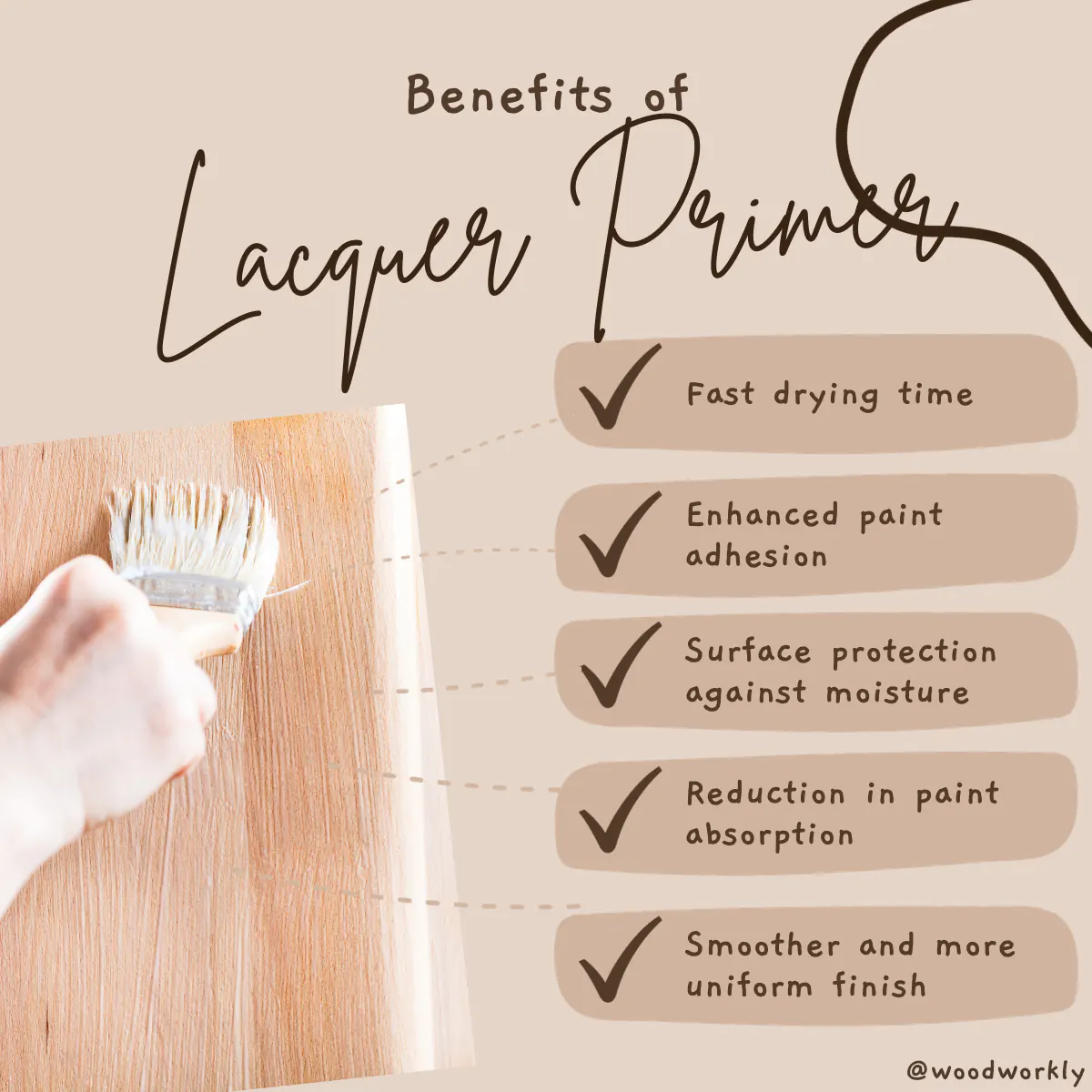
Can You Use Lacquer Primer On Wood?
Yes, you can use lacquer primer on wood before applying a paint or topcoat. Lacquer primer works great on any wood and makes good adhesion between the paint and wood surfaces.
Lacquer primer is able to reduce the number of painting coats needed to apply on wood since it seals the wood and prevents the first few coats of paint from absorbing into the wood.
Therefore, the paint will start to sit on the surface from the very first coat and this helps to save time and money for the application of paint.
Apart from that lacquer primer protects wood from weather elements such as moisture, water damage, and other impacts until the wood surface is covered by a topcoat.
Here’re some useful features of lacquer primer as an undercoat,
- Easy to sand when dry which helps to get a smooth finish without imperfections
- Dries and cures faster than other primers
- Adhere well to the wood and paint itself
- Accepts oil-based paint, waterborne paint, and lacquer topcoats
- Seal the porous woods well before the topcoat
So, it’s time to hit the peek of using lacquer primer on wood. How to use it? Let’s discuss this.
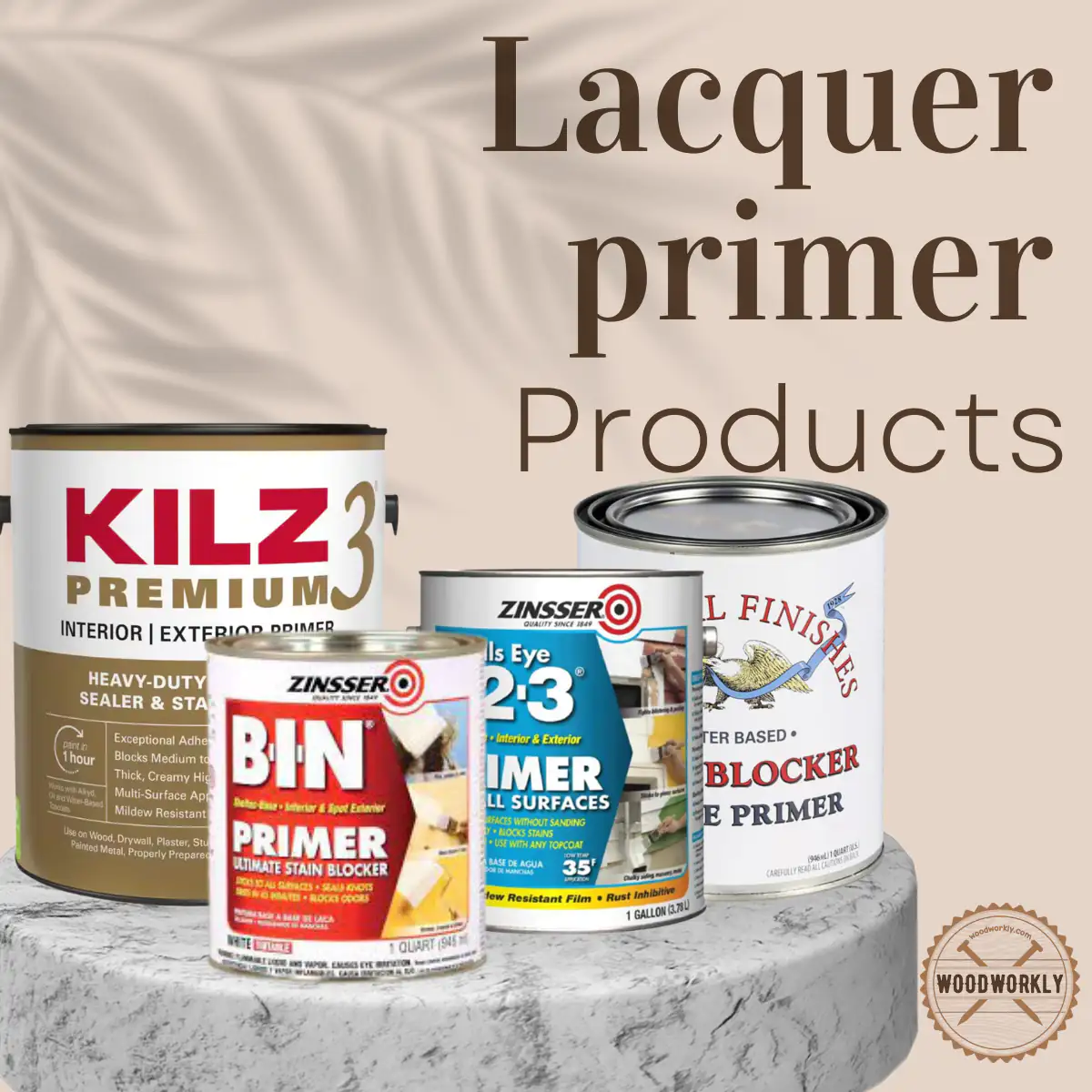
Tools And Materials to Apply Lacquer Primer On Wood
- Lacquer primer
- Tack cloths
- Sandpapers in different grits (220, 320, 180)
- Rags
- Two paintbrushes (one for primer and another one for paint)
- Paint Color
- Latex gloves
- Face mask
Get these things ready to take on the wood surface with lacquer.
Tips From Experts When Purchasing Lacquer Primer
- When purchasing lacquer primer ask the paint store to tint the lacquer primer to match the paint you selected. This helps paints retain new colors well.
- Never replace lacquer primer with an extra coat of paint since primers are designed to stick to the topcoat and it is unable to hide cracks and give sheen as paint does.
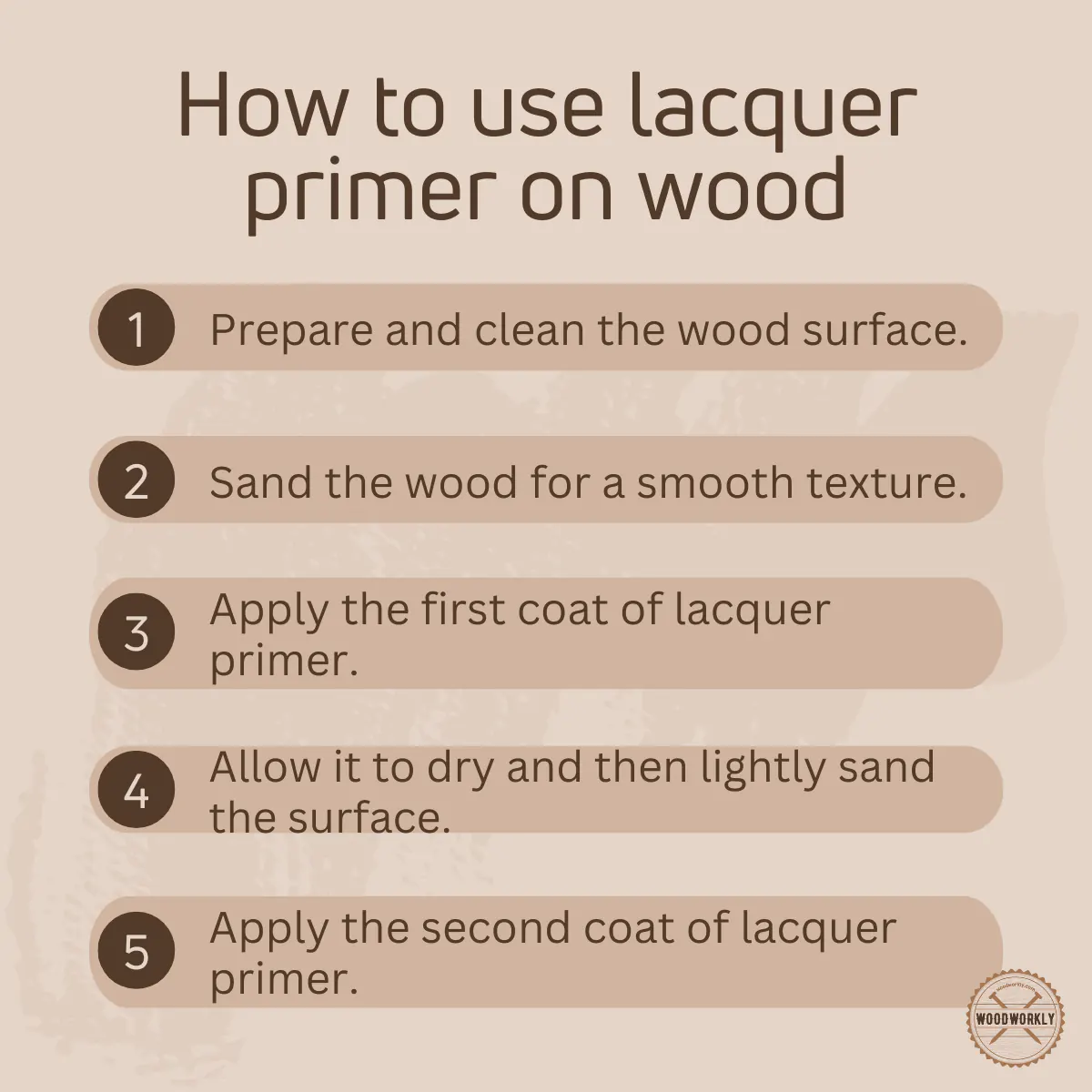
How To Apply Lacquer Primer On Wood?
Applying lacquer primer on wood is easy. It dries faster, is easy to sand, ensures good adhesion with paint, and lot more good qualities.
Always select quality lacquer primer when purchasing to get the output you wish.
Here’re the steps you need to follow when applying lacquer primer on wood,
- Clean and prepare the surface
- Sand and clean the wood
- Apply lacquer primer
- Let the lacquer primer dry
- Light sanding
- Apply the second lacquer primer coat
- Apply paint color or topcoat
So, let’s discuss each of the above steps in detail to get an in-depth idea of applying lacquer primer on wood.
1. Clean And Prepare The Surface
First, you need to take the furniture or woodwork that is going to be coated to a well-ventilated area.
During the application of lacquer primer and topcoats and paints, we have to deal with lots of chemical stuff that release harsh fumes and compounds when applying.
Having good air circulation in the area you work is a must to remove those chemicals and fumes well and that gives you room to breathe fresh air.
Chemical fumes cause breathing issues and wear a mask when finishing wood.
Plus, having good air circulation is good for fast and efficient drying of lacquer primer coats and paint coats.
Read to know, How Many Coats Of Primer On Wood? For Perfect Finish!
Then, take a clean tack cloth and clean the entire wood surface that you want to coat with lacquer primer. Remove dust, debris, and grease from the surface without missing any spots.
If dust or dirt gets mixed up with lacquer primer, you cannot get the best performance out of it and the appearance would be dull and unpleasant.
2. Sand And Clean The Wood
After cleaning the wood, sand the entire wooden surface with suitable grit sandpaper along the direction of the wood grain.
If the wood surface has too many imperfections and roughness, you’ll have to go with a coarse grit sandpaper and for the surface with fewer imperfections go with a finer grit one.
Sand the entire surface with little pressure on sandpaper to sand without leaving sand marks or scratches on the surface.
Sanding removes surface imperfections and makes the surface smooth, nice, and ready to take on lacquer primer.
Once you are done with sanding, clean the entire surface with rags or use a proper dust collection pipe system to remove sawdust and other residues.
Collected sawdust can be used as a fertilizer upon drying.
Make sure rags are dry since wet rags leave moisture on the surface that causes troubles when applying the primer.
Now it’s time to apply the lacquer primer.
3. Apply Lacquer Primer
Open the lacquer primer can and dip the tip of the paintbrush and apply a thin coat of lacquer primer along the direction of the wood grain.
Applying a thin coat of lacquer primer is a must since thick coats cause blotches and streaks upon drying. Plus, thick coats take too much time to dry and sometimes may end up with tacky surfaces.
Distribute lacquer primer evenly throughout the surface.
First coat for lacquer saturate wood fibers and seal the wood surface well before applying the topcoat.
It basically works as an undercoat or preparatory coating applied on wood.

4. Let The Lacquer Primer Coat Dry
After applying the first coat of lacquer primer let it sit on the surface dry and cure for 1 hour.
Usually, lacquer primer dries within 30 minutes after the application. But this varies on the environmental humidity and the thickness of the coat.
Therefore, I recommend you let the lacquer primer coat dry for at least 1 hour before applying another coat.
Applying another coat of lacquer primer before the first one dried completely is not recommended and that leads to never drying a tacky or splotchy surface with an unpleasant look.
5. Light Sanding
Once the first coat of lacquer primer is dried and cured properly, do the light sanding along the direction of the wood grain to smoothen the surface and improve the adhesion between coats.
Lacquer primer is easy to sand, and sanding improves the topcoat to adhere better to the lacquer primer coat.
Make sure to use 320 grit or finer sandpaper and do the sanding with little pressure without damaging the lacquer primer coat underneath.
6. Apply The Second Coat Of Lacquer Primer
After the first coat of lacquer primer is dried and sanded properly, clean the surface and apply the second coat of lacquer primer along the same direction that followed to apply the first coat of lacquer primer.
Apply the second coat of lacquer primer using the same procedure that you followed to apply the first one.
After the application let the second coat of lacquer primer coat dry and cure properly for 2 hours.
This second coat of lacquer primer may take more time to dry since it is already on top of the first one and the total thickness of lacquer coats is bigger than the previous one.
Once the second coat of primer is dried, lightly sand the entire surface with 320 grit or fine grit sandpaper using the same procedure as you did earlier.
Clean the surface with a tack cloth and you’re good to apply paint color or topcoat above the lacquer primer.
7. Apply Paint Color Or Topcoat
It’s time to paint.
Apply the first coat of paint above the dried lacquer primer coat. you’ll notice that paint doesn’t absorb into the wood. it just sits on a lacquer primer coat and colors the wood.
Lacquer primer ensures better adhesion of the paint to the surface. This makes the painting job lot easier.
Since paint starts to sit on the wood and color the surface even starting from the first coat, you don’t need to apply so many coats on wood as you apply paint on bare wood when the wood is readily coated with primer.
You can apply the second coat of topcoat or paint once the first one dried completely.
Lacquer primer saves the number of painting coats you need to apply on wood to get the exact color you with and saves the extra time you use to apply more and more coats on wood.
Lacquer primer basically, saves your time, and money and increases the efficiency of the painting job.
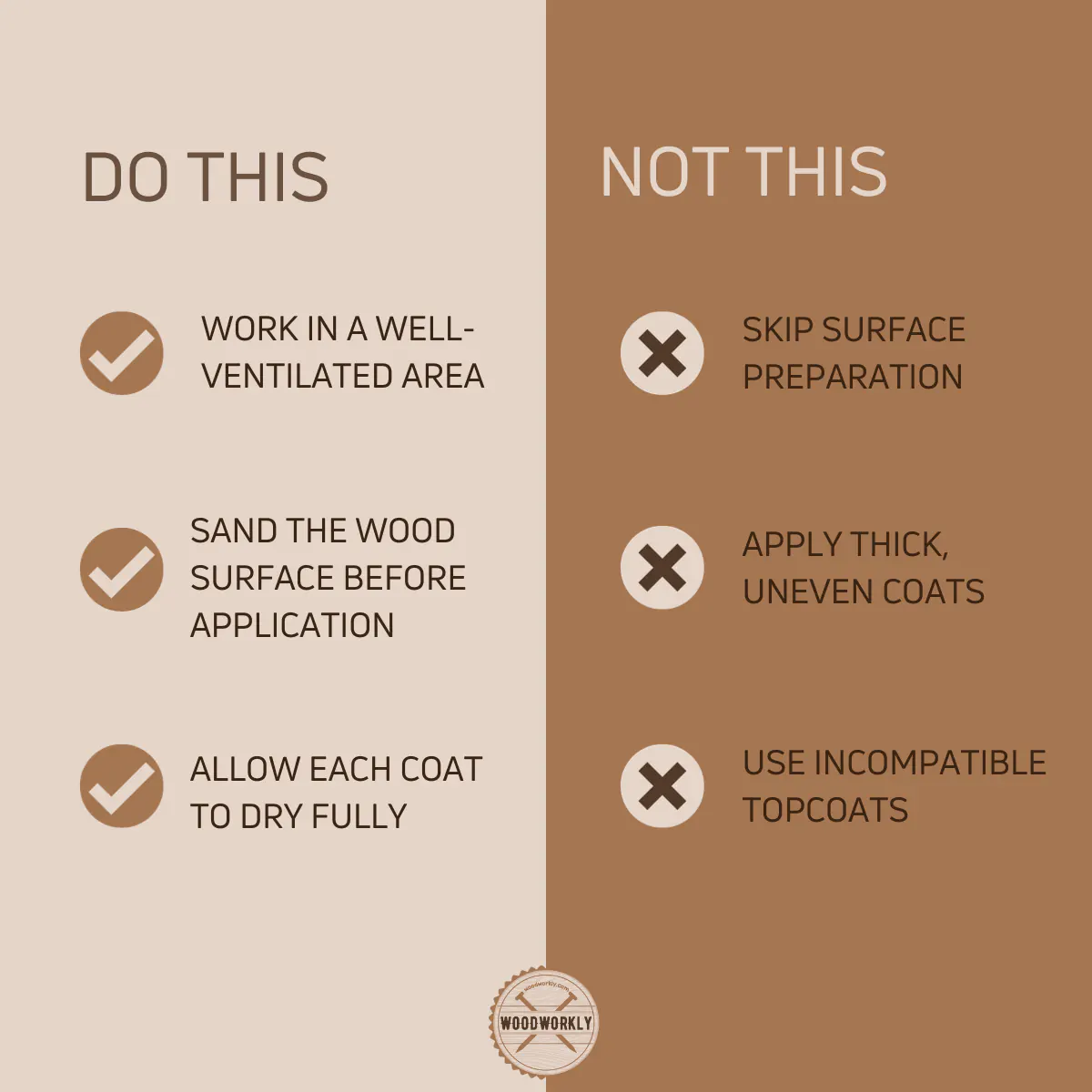
That’s it, folks! Now you know how to use lacquer primer on wood perfectly in detail.
Let’s compare lacquer primers with some other popular primers in the market.
Lacquer Primer Vs Epoxy Primer
Here’re some similarities and differences between lacquer primer and epoxy primer,
| Lacquer Primer | Epoxy Primer |
| Adhere well to the paint | Adhere well to the paint |
| Moisture passes through the lacquer primer under extreme conditions causing the wood to rot inside | Moisture doesn’t pass through the epoxy primer and waterproof the surface |
| Tends to shrink over time due to poor maintenance. | No shrinkage over time |
| Less expensive | Expensive than lacquer primer |
As you can see epoxy primer is better to use as a primer than lacquer primer. But that is completely based on your personal preference.
Lacquer Primer Vs Urethane
Here’re some similarities and differences between the lacquer primer and urethane,
| Lacquer Primer | Urethane |
| Adhere well to the paint | Adhere well to the paint |
| 2 coats are recommended to apply | 1 coat is enough since urethane primer contains more solids |
| Less durable than urethane primer | High durability |
What Is The Best Primer For Lacquer Paint?
Here’re some of the best primers for lacquer paint,
- Zinsser Bulls Eye All Surface Primer
- KILZ Premium HIGH-Hide Latex Primer
- KILZ Premium HIGH-Bonding Latex Primer
- Zinsser Shellac Primer
- General Finishes Stain Blocking Primer
Read to know the Best Exterior Wood Primers: Manually Tested!
Do You Need Primer Before Lacquer?
No, Applying primer before lacquer paint is not essential but primer helps lacquer to adhere well to the surface and can get results with less lacquer paint coats.
Primer helps to seal the porous wood and avoid lacquer paint from wasting by absorbing into the wood.
Plus primer seals the wood before applying the paint.
But, you can apply lacquer paint even without primer. Primer just makes the paint job lot easier.
Can You Use lacquer Primer With Enamel Paint?
Yes, you can apply lacquer primer with enamel paint. Lacquer primer acts as the undercoat and helps enamel paint are well to the surface.
But you need to sand the lacquer primer coat when it is dried and cured. Otherwise, enamel paint won’t adhere well and results in a tacky surface.
Can You Use Lacquer With Urethane Paint?
Never apply urethane paint over lacquer primer. Use urethane primer as the base for the urethane paint. Urethane paint doesn’t blend well with lacquer primer.
The bond between the urethane paint and lacquer primer is inadequate and you won’t get the nice finish you wish.
Always use urethane primer as an undercoat for the urethane paint to get the best results.
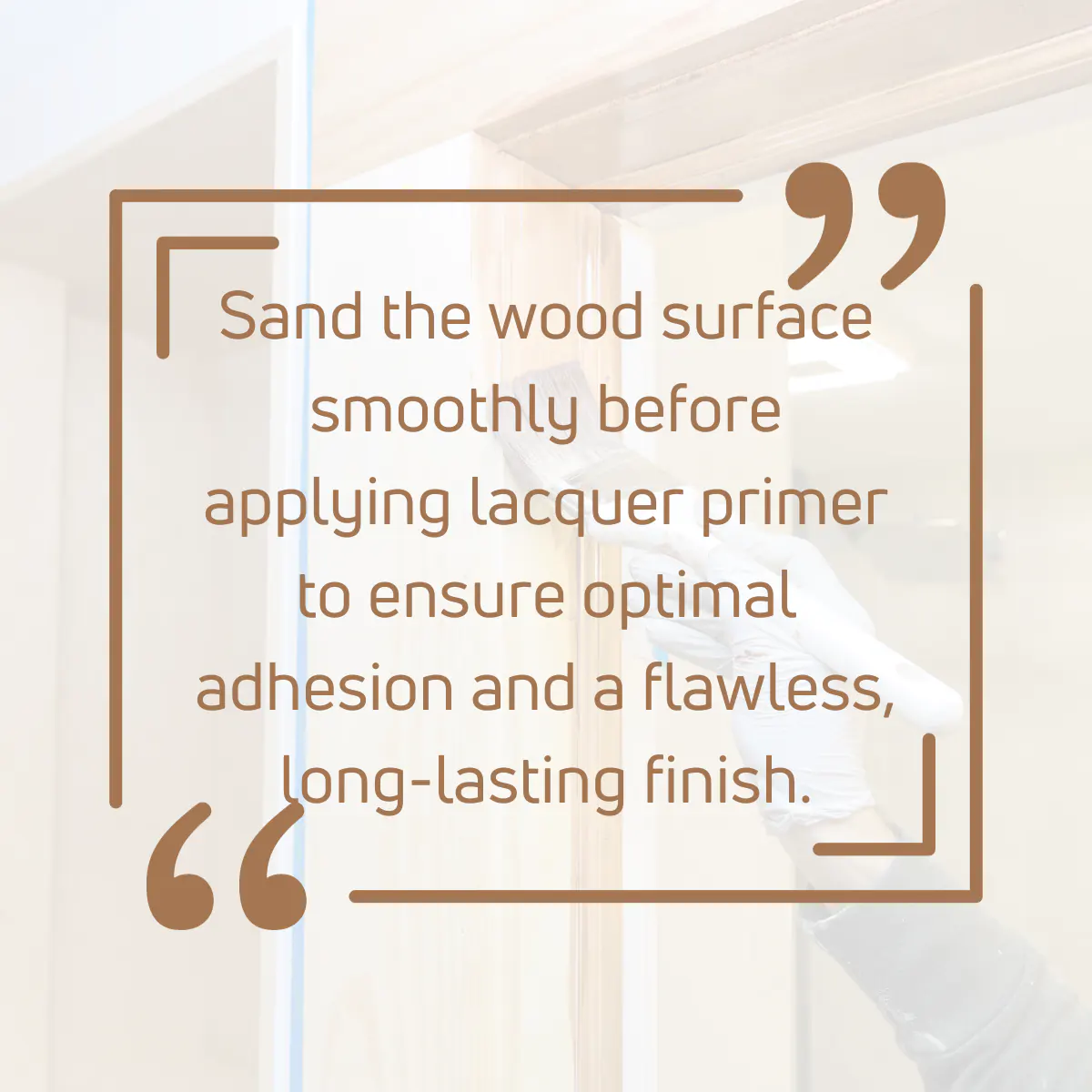
So, let’s answer some frequently asked questions.
FAQs
What is lacquer primer and why is it used on wood?
Lacquer primer is a special undercoat applied to wood to enhance paint adhesion, prevent excessive paint absorption, and seal the wood for a smoother finish. It’s popular for its fast drying properties, ease of sanding, and ability to deliver a professional, long-lasting finish.
Can lacquer primer be used indoors, and what are the safety precautions?
Yes, it can be used indoors, but it’s crucial to ensure good ventilation due to the chemical fumes released during application. Always wear appropriate safety gear like masks and gloves to protect against potential health risks.
Is lacquer primer compatible with all types of paints and finishes?
Lacquer primer works well with oil-based, waterborne, and lacquer topcoats, ensuring versatile application options. However, it’s not recommended to use with urethane paint as they don’t blend well.
How long does it take for lacquer primer to dry?
Typically, lacquer primer dries within 30 minutes to an hour, although this can vary based on environmental conditions and the thickness of the application. It’s known for its rapid drying properties, allowing for efficient project completion.
Do I need to sand the wood before applying lacquer primer?
Yes, sanding the wood is essential to ensure a smooth, even surface for optimal primer adhesion and finish quality. The process removes imperfections and prepares the wood for primer application.
Is a second coat of lacquer primer necessary?
Applying a second coat enhances the wood’s protection and ensures that any missed spots or imperfections are adequately covered, promoting a uniform, smooth base for the topcoat or paint.
Can lacquer primer be used with enamel paint?
Yes, enamel paint can be applied over lacquer primer. However, it’s recommended to lightly sand the primer surface to ensure optimal paint adhesion and a smooth, durable finish.
Is it necessary to apply a primer before using lacquer paint?
While it’s not strictly necessary, applying a primer before lacquer paint enhances the surface’s smoothness, improves paint adhesion, and contributes to a more refined, long-lasting finish.
How do lacquer primer and epoxy primer differ?
Lacquer primer is typically less expensive and easy to apply but may allow moisture penetration under extreme conditions, while epoxy primer is more durable, moisture-resistant, and slightly costlier.
What tools are needed to apply lacquer primer on wood?
Essentials include lacquer primer, varied grits of sandpaper, paintbrushes, tack cloths, clean rags, paint, latex gloves, and a face mask for safety during application.
Did I cover all you wanted to know about: Using Lacquer Primer For Wood
In this article, I have discussed what is lacquer primer and how it works as an undercoat for different types of paints and topcoats, and how to apply lacquer primer over any wood with no issues with tips.
Lacquer primer works as an undercoat and helps paint or topcoat to adhere well to the wood surface. Lacquer primer seals the porous wood and helps to reduce the number of paint coats required. Application and sanding lacquer primer is easy and it increases the durability of the paint coats.
Furthermore, I’ve answered some frequently asked questions.
Hope you learned so many new things about lacquer primer thanks to the research I did about lacquer primer with the help of field experts.
The whole credit of this article goes to them.
Try to apply lacquer primer for wood and metals using the process that I described above and get the results you want with ease.